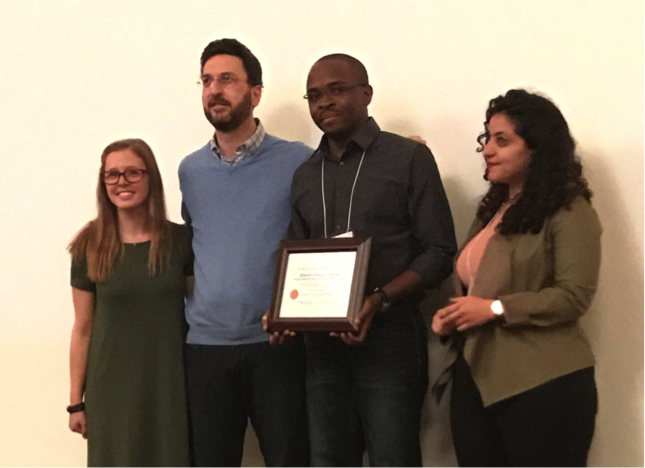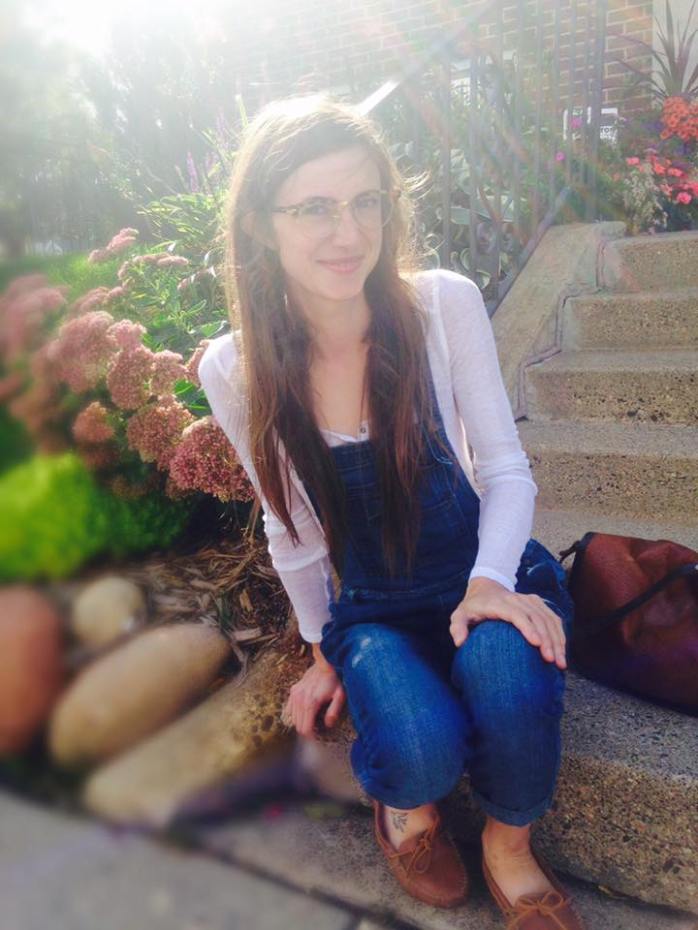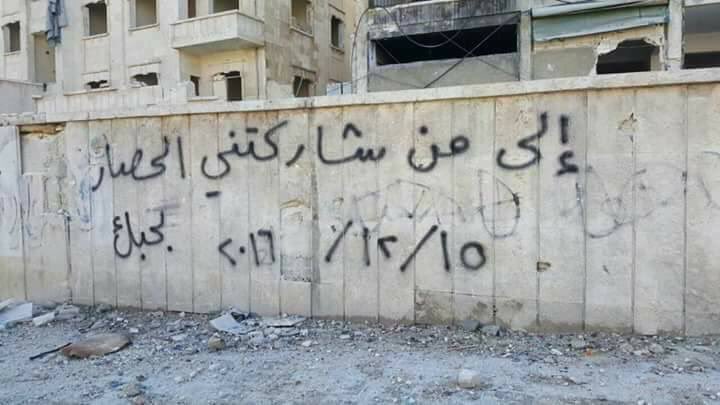The following is an open letter to the organizers of an African Trade Forum event, who have announced that Maowia Osman Khalid, Ambassador of Sudan to the US, will be on campus for a panel co-hosted by the Carlson School of Management.
USC Shoah Foundation Center for Advanced Genocide Research has decided to endorse the initiative of a group of seven scholars from different Latin American countries to study Holocaust Survivors in Latin America as part of its Interdisciplinary Research Week. Not an alien in the context of terrorscapes and transitional justice, Latin America has been a space of contested narratives regarding mass violence.
In countries like Colombia, realities of forced displacement, illegal prosecution, and war narratives have been ongoing historically, which has been widely documented and studied. However, there is still much to be discovered, especially as these narratives coexist with narratives of survival from the Holocaust. In this regard, Latin America has been related to the Holocaust mostly as an important space for refuge after WWII.
One of the many key moments that led me to love the United States and its people happened in 1986. I was at a gathering of international students in Palo Alto, most of them with a European background just like me. The mood was very much anti-American, not the least because Reagan had just tried to kill Gaddafi by bombing Tripoli. He had missed the target but managed to create a lot of angst that WW III was about to break out. Everybody in the room was lamenting the ignorance of the Americans and political naïveté of their leaders in the harshest terms. I felt bad for the only American student in the group who got an ear full of unabashed Eurocentrism. After all, he was representing the host country and we didn’t really behave like guests, or, for that matter, like visitors from countries that had benefited from US protection as long as anybody in the room could remember. After everybody had unloaded, he just said, “You are probably right, the US is a big country, a lot of Americans don’t travel and don’t really know what’s going on outside the country, and sometimes we mess up.” He was the only one in the room who talked calmly, without drama and with a healthy shot of self-confidence. Back then, most Americans I talked to shared my fellow student’s relaxed and self-reflective form of patriotism. Possibly, because the lessons of the Vietnam War were still on everybody’s mind and the Cold War had not been won yet.
This year at the Sociological Research Institute, hosted by the Sociology Department at the University of Minnesota, the Center for Holocaust and Genocide Studies took home a few awards. Congratulations!
The Genocide Education Outreach (GEO) program was awarded the Public Sociology Award, an annual award to acknowledge the work of individuals reaching beyond their research to make change outside the university. CHGS’s GEO program pairs graduate students based on area of expertise with community organizations in need of genocide education support in that area.

This past week, the Basque town of Guernica recounted the sorrow and devastation inflicted 80 years ago. On that fateful late afternoon of April 26th 1937, German and Italian aircrafts, at the urging of their ally, General Franco and his right-wing Nationalists, unleashed their bombs on unsuspecting civilians.
Just nine months before, Franco had led a coup against Spain’s Republican government dragging the country into a civil war. The Nationalists eventually triumphed and Franco ruled Spain for the next 36 years.
For a long time, the word Guernica stirred powerful emotions among Spaniards and Europeans who witnessed the destruction wreaked by Fascism. It was a crime against humanity that shocked the world, and was later immortalized by Picasso’s famous expressionist mural. However, the 80th anniversary has received rather scant attention in the US. In my classes last week, I tried to explain to my students why Guernica should remain historically relevant to citizenry across the globe.
It seems, indeed, that the far right party in France is leading. The National Front (abbreviated “FN” for Front National in French) could possibly win the election after having lost in 2002 to Jacques Chirac. This is due to the fact that, in the last 15 years, France has become more conservative and protectionist, intensified by issues such as the migrant crisis and several terrorist attacks on French soil.

Congratulations to Alejandro Baer, Natan Sznaider, Bruno Chaouat, Lisa Hilbink and Ofelia Ferrán for publishing new books! Below are short descriptions of each.
Brieanna was born and raised in northern Minnesota, and received her B.A. in Sociology from Augsburg College in 2011. After completing her M.A. in Sociology from Queen’s Universi ty in Northern Ireland, she served in AmeriCorps as a Promise Fellow, taught sociology at a community college in Oregon, and was the Family Liaison at an Ojibwe culture and language school last year. With broad interests in mass violence, collective memory, and settler colonialism, she returned to Minneapolis to pursue her Ph.D. in Sociology at the University of Minnesota.
ty in Northern Ireland, she served in AmeriCorps as a Promise Fellow, taught sociology at a community college in Oregon, and was the Family Liaison at an Ojibwe culture and language school last year. With broad interests in mass violence, collective memory, and settler colonialism, she returned to Minneapolis to pursue her Ph.D. in Sociology at the University of Minnesota.
Brieanna writes for the CHGS blog on topics and events related to both American Indians broadly, and the Dakota and Ojibwe specifically. She is currently involved in a team project with Alejandro Baer examining over a century of local and national newspaper articles and their representations of the Dakota War of 1862; a timely undertaking, given the push toward revitalizing Fort Snelling and decisions to remove controversial art at the State Capitol. In addition, she is working on a side project with two other graduate students titled, “Imagining a “Final Solution” to “Never Again”: Experiencing Empathy through Digital and Non-Digital Games”.
We have grown accustomed to seeing photographs captured during conflict dehumanizing victims and fetishizing their suffering. Our Eye on Africa column has previously discussed the disproportionate ways in which the pain of non-western victims is consumed through the media, even though it does not educate us about the context leading to the suffering. Yet, other forms of war-photography capture something else: everyday life under conflict. Instead of focusing on the pain and suffering of victims, these photographs aim to highlight the continuity of life. They focus on the possibility of a future and the necessity to maintain a sense of self. Conflict and suffering can in fact be captured in ways that do not always freeze moments of agony and death in eternity.

“Nasty, brutish, and short.”
In a recent lecture by Ambassador Stephen Rapp, hosted by the Human Rights Program, he borrowed from Thomas Hobbes’ famous line to describe life in a world without justice. His presentation kicked off a lecture series about the ongoing Syrian crisis.

Saying that Ambassador Rapp has an extensive resume is an understatement: he served as Ambassador-at-large for War Crimes in the Office of Global Criminal Justice, a position which brought him around the globe to address a wide span of conflicts during his 2009-2015 term. His legal experience includes positions in the International Criminal Court and the International Tribunal for Rwanda, where he helped prosecute the first conviction for a member of the media in inciting genocide. Currently, he holds positions with the Hague Institute for Global Justice and the US Holocaust Memorial Museum’s Center for the Prevention of Genocide.
